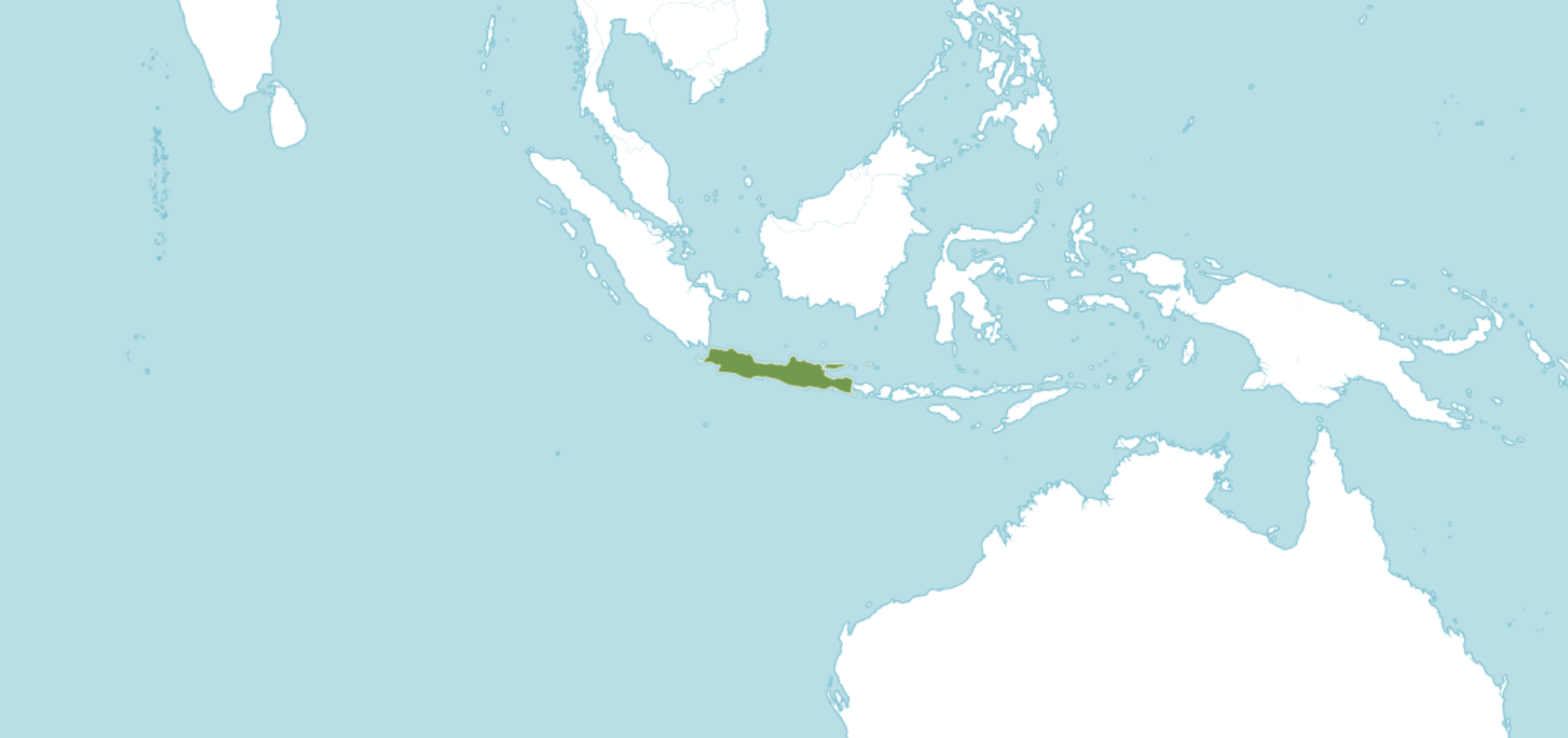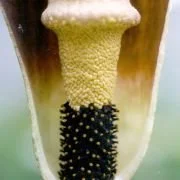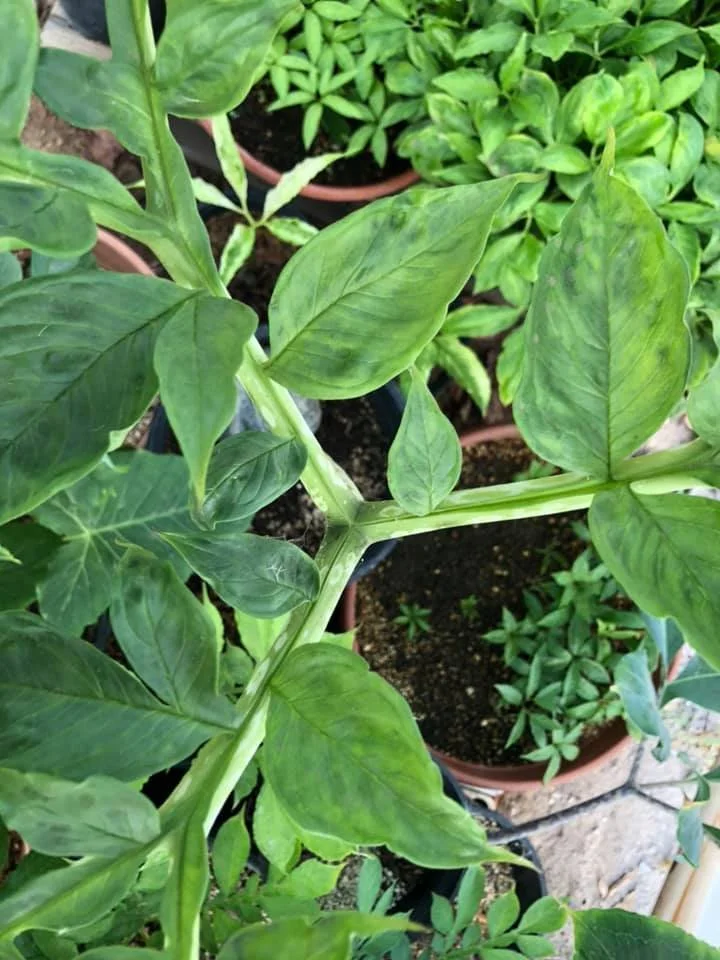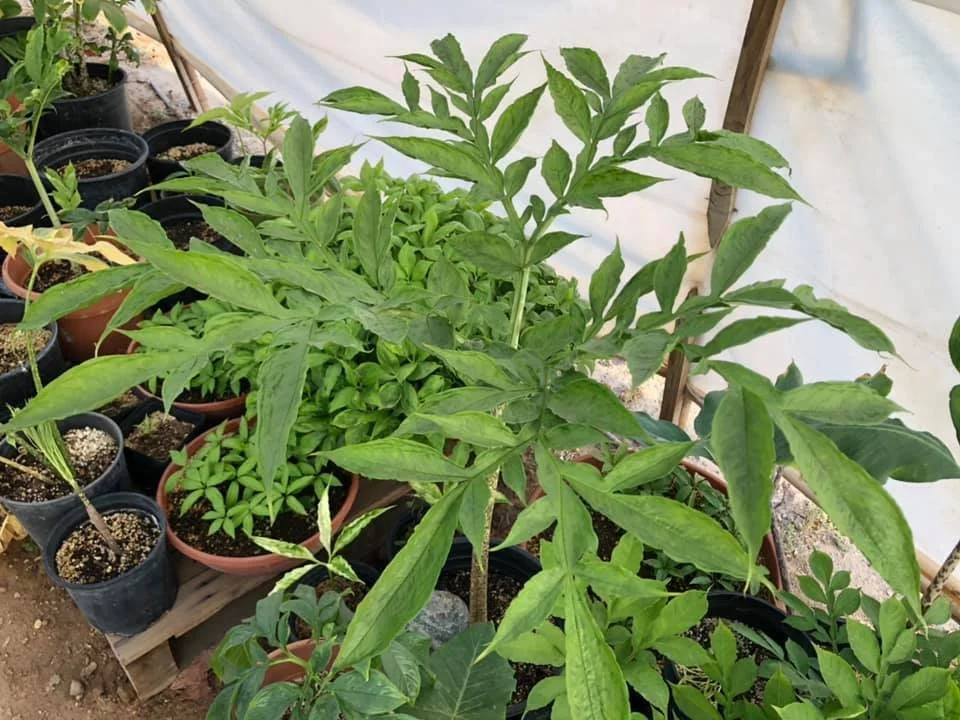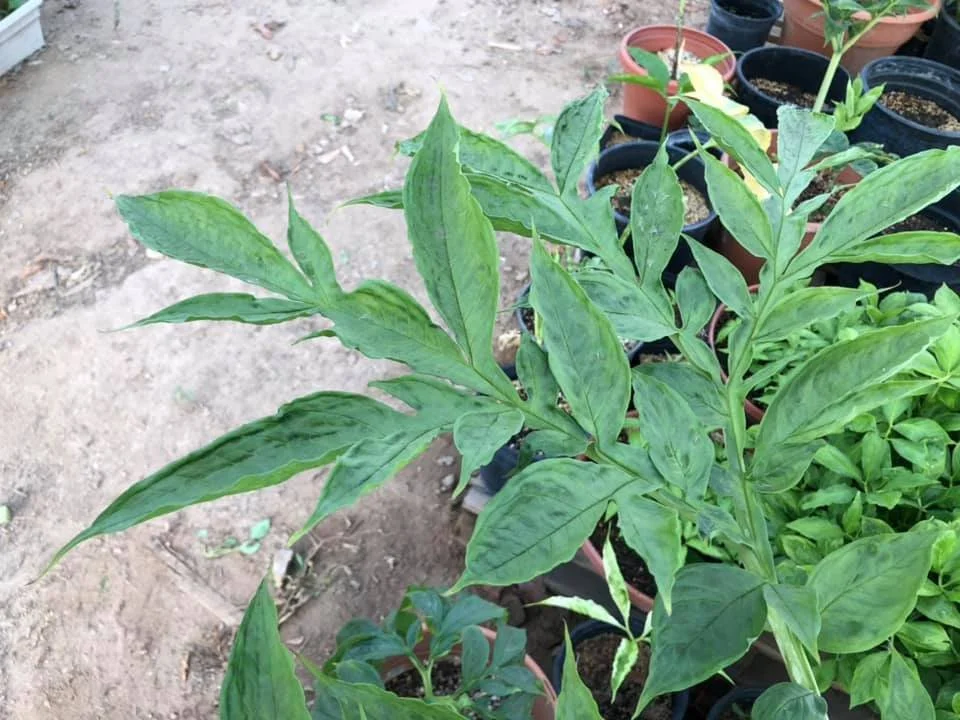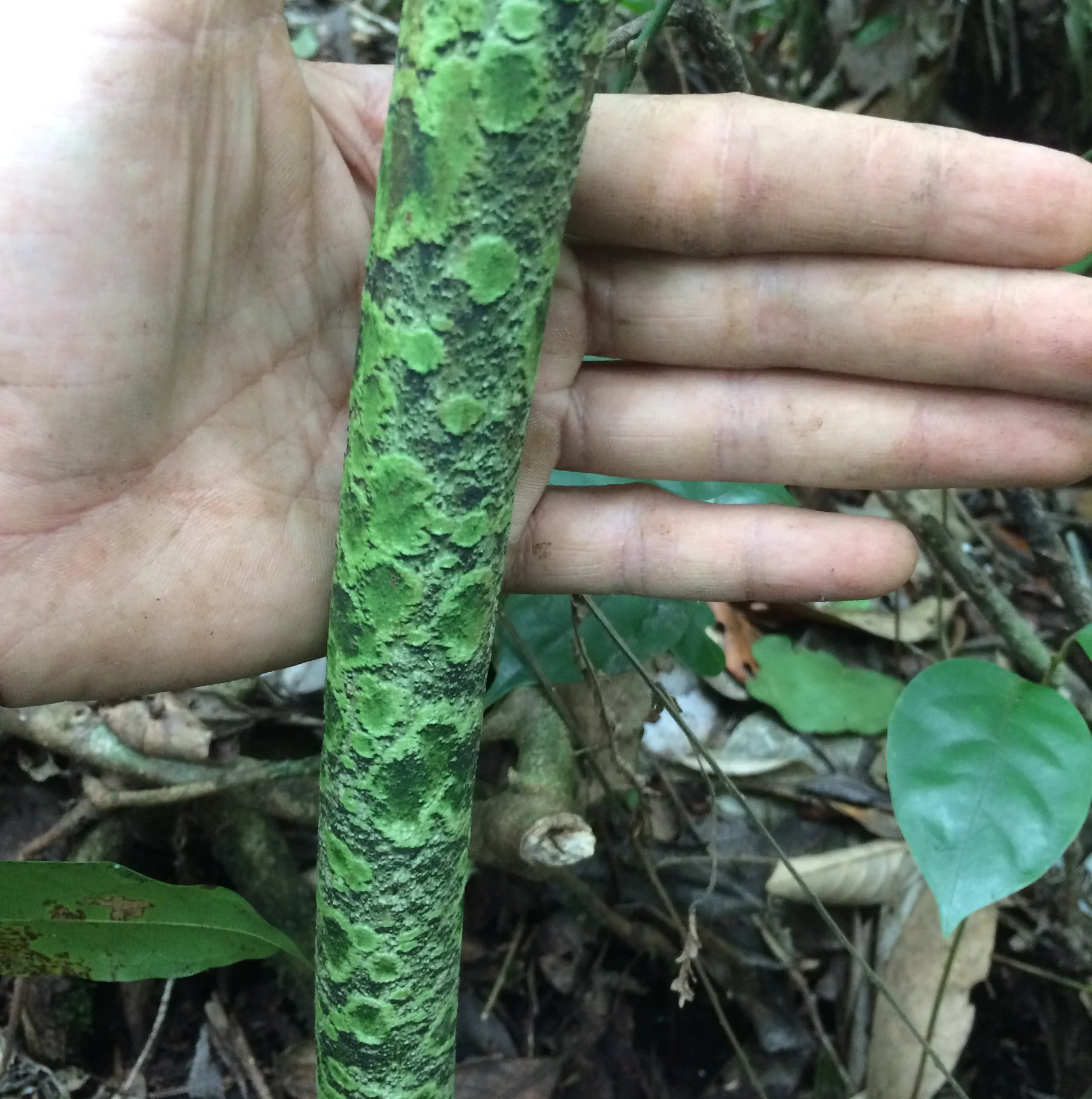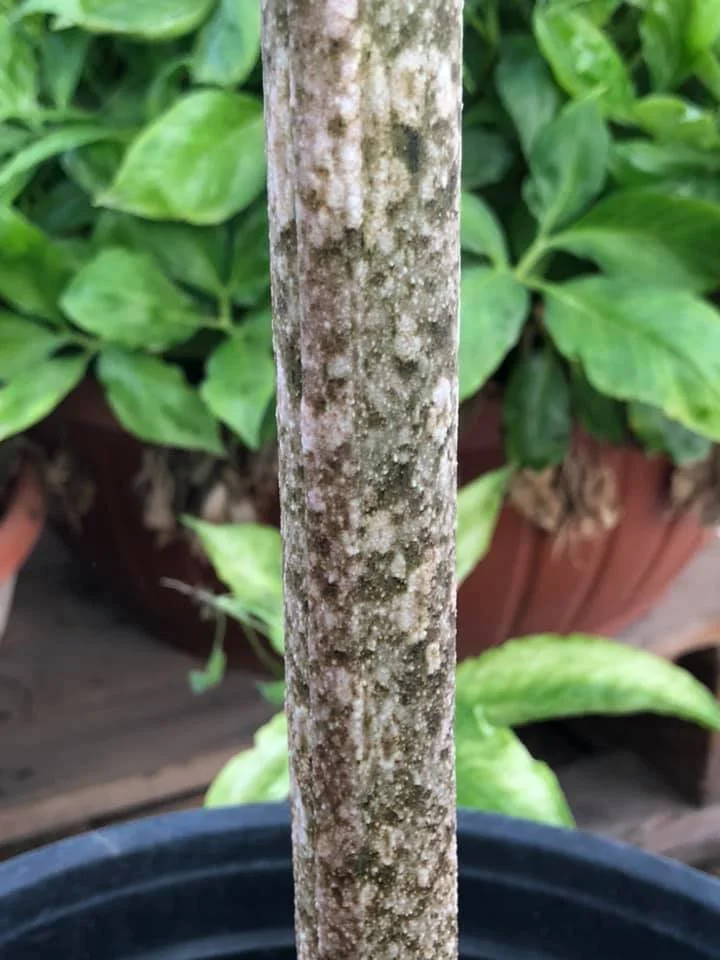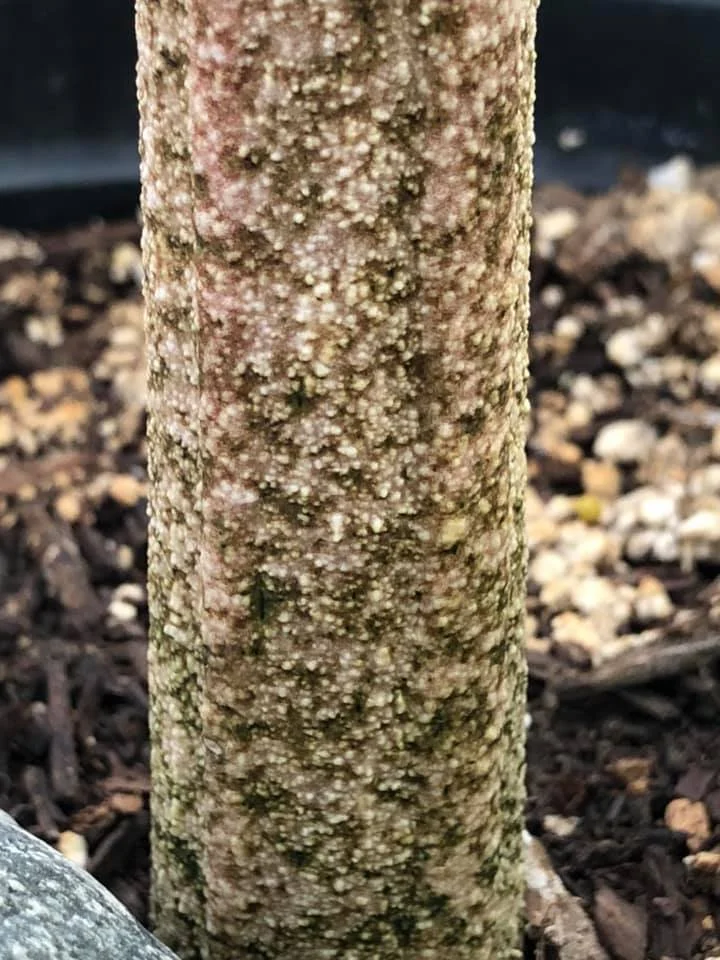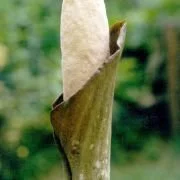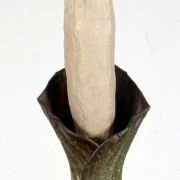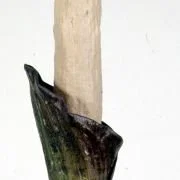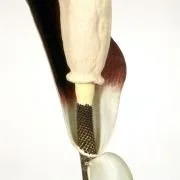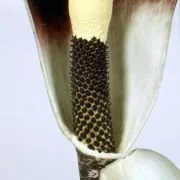AMORPHOPHALLUS ANNULIFER
ORIGINAL DESCRIPTION:
Amorphophallus annulifer Hett., spec. nov.
Amorphophallus muelleri auct. non Blume ('mulleri’).
Ab omnibus aliis in inflorescentiis bene evolutis appendicis basis concrescentia annuliformi differt. Inflorescentiae parvae quae hunc characterem carentes A. discophoro similes sed illae extensione disciformi in zona mascula egent et spadix spatha superans.
Typus: Hetterscheid H.AM. 119-T (L holo; spirit coll.), 3-i-1991, cult. Hon. Bot. Leiden ex Indonesia, Java, Lengkong, c. 750 m alt., in lowland rain forest on clayish soil (orig. coll. van Balgooy s.n., v-1990).
Photo by Juan Jimenez
SYNONYMS:
HOMOTYPIC SYNONYMS: N/A
HETEROTYPIC SYNONYMS: N/A
ACCEPTED INFRASPECIFICS: N/A
DISTRIBUTION: Indonesia | Java
CLIMATE: Unknown
ECOLOGY: It is a tuberous geophyte and grows primarily in the wet tropical biome.
SPECIES DESCRIPTION:
Tuber subglobose, up to c. 10 cm in diam., weighing up to c. 600 gr., dark brown, no offset development. Leaf (only known from small specimen) solitary; petiole 90 cm long, 2 cm in diam., background a complex marbling of shades of blackish green, mid green and paler green, upwards grading into dark brown and mid green shades, in upper half with larger, scattered, oval to elongate-elliptic white spots with brown marbling in the centre, basal part with many small, rigid verrucae; lamina 100 cm in diam., rhachises only narrowly winged in the distal parts; leaflets elliptic or ellipticlanceolate, 8-15 cm long, 4-5 cm in diam., long acuminate, upper surface moderately glossy green.
INFLORESCENCE:
Inflorescence long peduncled; peduncle as petiole, 66-156 cm long; spathe oval to triangular ovate, 13-29 cm long, 14-25 cm in diam., base strongly convolute, limb erect, broadly acute, outside base with pale greenish background and larger and smaller brown spots and numerous small white spots, towards the limb suffused with a brownish purple hue, the latter especially strong near the margin, inside base pale greenish white, above that a small zone of reddish purple, then entirely dark maroon, with some small white dots at the base-limb transition, base within smooth or with furrows and in between scattered, small, muricate warts. Spadix sessile, longer than spathe, 22-56 cm long; female zone near cylindric, slightly tapering to the top, 3-8 cm long, 1.7-2.7 cm in diam., base oblique, flowers congested; male zone cylindric with a strongly expanded top or obconic, 3-3.5 cm in diam., flowers congested; appendix elongate fusiform-conic, inflated, hollow, thin-walled, 16-44 cm long, slightly or more prominently laterally compressed, with or without (feeble specimens) a strong, ring-like expansion near the base, thickest at about 1/3 from the base, diameter at the base 2.7-3.5 cm, that of the ring c. 5.5 cm, diameter at widest point 3.5-8 cm, top subacute, surface granulate, off-white, at the base with flattened staminodial structures separated by shallow grooves, a strong stench of dirty socks or fish develops at female anthesis. Ovaries depressed, angulate, 3-5 mm in diam., 2.5-3.5 mm high, bilocular, lower part whitish green, upper part dark maroon; style 2 mm long, 0.5 mm in diam., dark maroon; stigma c. 1 mm in diam., c. 1 mm high, shallowly bilobed, lobes conic, leaving the style clearly visible on the outer side, surface densely echinulate, reddish brown. Male flower consisting of 3 or 4 stamens; stamens c. 3 mm long; filaments c. 1.5 mm long; anthers c. 1.5 mm long, c. 2 mm in diam., truncate, pale yellow, connective very pale greyish green, pores elongate, apical. Pollen fossulate.
VARIEGATED FORMS: N/A
ETYMOLOGY: The species epithet refers to the annulate widening of the appendix base.
NOTES:
Additional specimens - Van Balgooy 4536 (L), Indonesia, Java, Lengkong; Widjaja s.n. (L), Indonesia, Java, Jampang Kulon Forest.
CULTIVARS: N/A
HYBRIDS: N/A
REFERENCES:
Photos from Juan Jimenez and Furkon Muhammad

